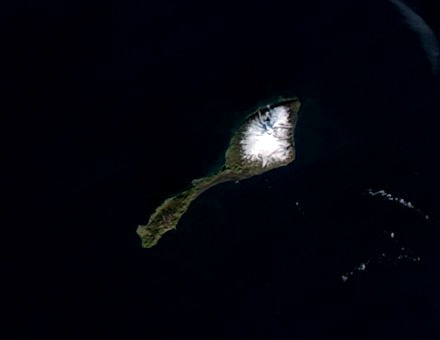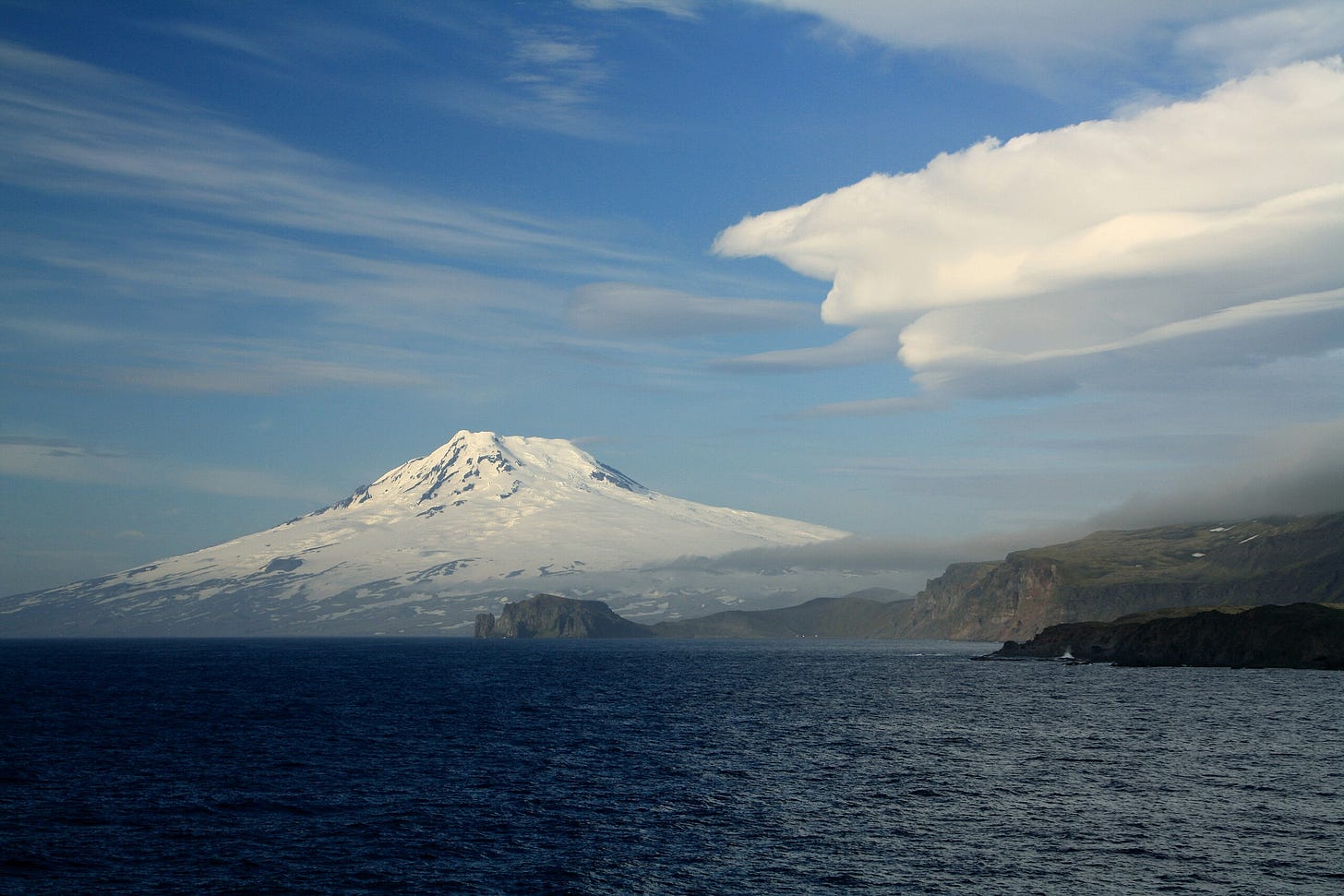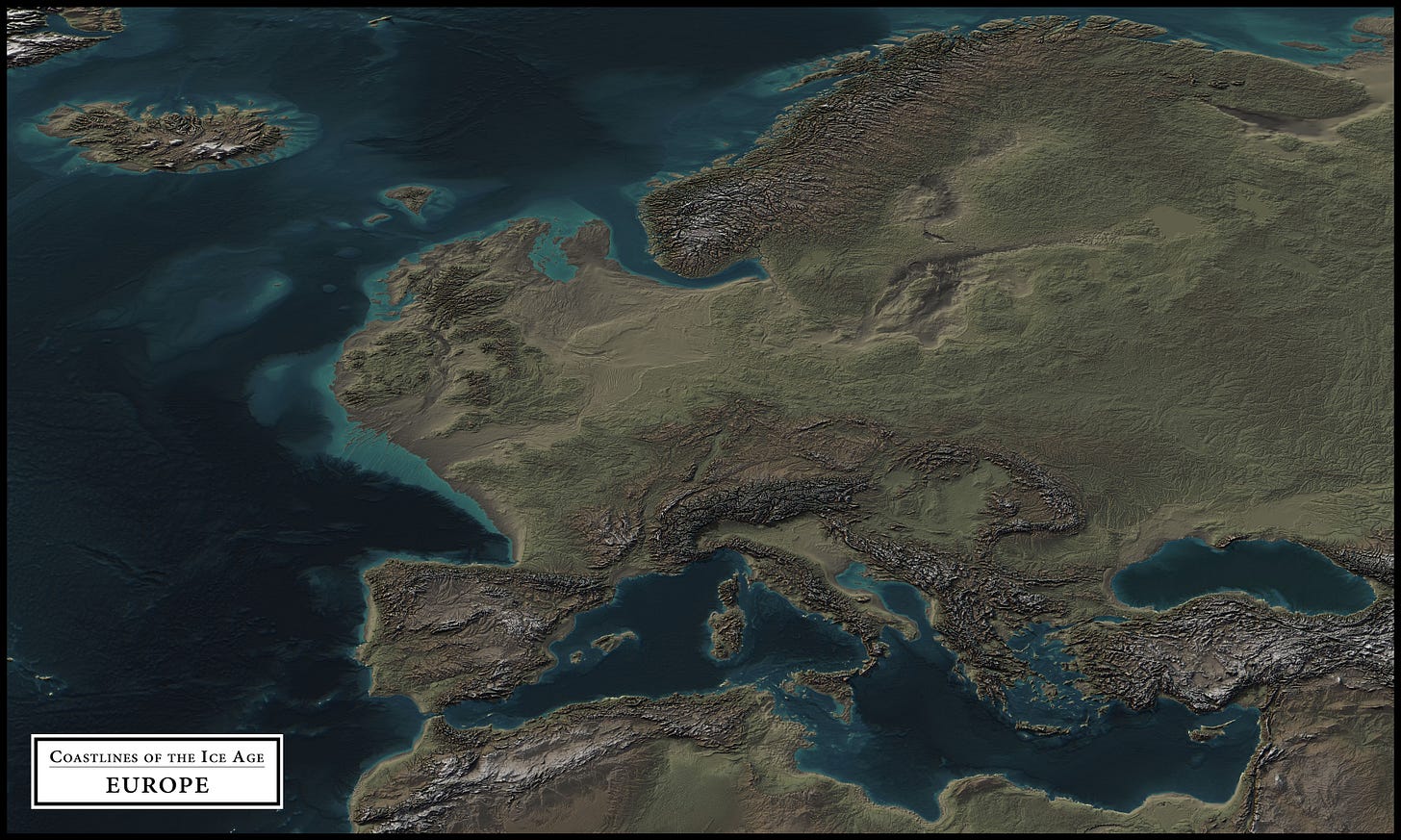Last time in this series we explored the ruin of Beleriand and the lonely island of Rockall in the Mid-Atlantic. Now, we’ll turn our attention further North, to the icy-wastes of the Arctic.
Following the success of our last adventure into Tolkien’s mythos, I thought that if so much of Beleriand and Middle-Earth could be identified, why not more distant lands? My thoughts turned to Morgoth’s (Tolkien’s version of Lucifer) fortresses in the far north, specifically Angband, from whence came the dark armies that warred against the Noldor in The Silmarillion. Perhaps this dark realm had a basis in reality in Tolkien’s mind.
Angband, Elven for “hell of iron”, was originally built by Morgoth as a stronghold to defend his main fortress that lay even further to the North, Utumno. But after the destruction of Utumno, Angband became his chief lair. The fortress was located underneath the three-peaked volcanic mountain, Thangorodrim, that Morgoth had himself raised as a defense. From the firery halls of Angband poured the armies of orcs, balrogs, dragons, and other hellish creatures. At the end of the First Age, in the War of Wrath, the Valar completely destroyed Angband and the surrounding land sank into the sea.
But, ages later, trying to locate Angband today is tricky, since unlike everywhere else that w'e’ve explored thus far, Morgoth’s realm is far in the North, off of the maps. We can only go by what is written.
Tolkien tells us that it lies above the plains of Ard-Galen, which is the wide land above Taur-Nu-Fuin, which we previously identified as Iceland. It was on these plains that great battles were fought between the elves and the forces of darkness.
So, all we really have to go on is that Angband lies some distance North of Taur-Nu-Fuin (Iceland) and is a three-peaked volcanic mountain (more specifically, the ruined remains of one).
In the far North Atlantic, there isn’t much to find at first glance. Most of the small islands are uninhabited and most of them barely have any history attached to them at all. At most, maybe some stories of Gaelic monks who settled there for a time, or maybe some ports for whalers. There is also not much to go on in the realm of myths like the Norse sagas or Celtic legends.
But, there is one small volcanic island roughly 350 miles north of Iceland that caught my attention.
Jan Mayen.
Jan Mayen is a Norwegian island that is uninhabited for most of the year. It’s history involves some accounts of being discovered by early monks or explorers or whalers. By the 17th century it was a Dutch whaling base. Today it is an official Norwegian nature reserve.
However, its primary interest for us is that it is home to the northernmost active subaerial volcano in the world, Beerenberg - “Bear Mountain” in Dutch. Over 7000 ft high, it’s an impressive sight in the midst of the lonely arctic ocean.
It does not have one specific eruption zone, eruptions occur at scattered locations on the mountain. However, this only tracks more with the idea of it being a shattered Thangorodrim, now broken and smoldering. It’s location all alone in the sea certainly sounds like Angband’s location north of Beleriand beyond the fields of Ard-Galen.
But is this volcano linked to Thangorodrim and Angband? While my gut told me “yes”, as it is really the only reasonable location (there’s no other lonely volcanoes north of Iceland), I needed to find something more, some connection to Tolkien, even if only a small one.
However, I was unsuccessful in finding any sort of legend or folktale related to Jan Mayen. It has not had a particularly interesting history and does not seem to have been much involved in the exploration of the Vikings, though it is possible that they discovered it.
But I couldn’t post an article like this based only on gut feeling, so I kept looking. I began looking into individuals with a connection to the island or the volcano.
Eventually I came across the members of the first expedition to ever successfully ascend the summit of Beerenberg, in 1921. It was a big deal at the time, apparently recognized by Time magazine as the “mountaineering event of the year”.
The members of the party were Dr. Paul Louis Mercanton, James Wordie, and T.C. Lethbridge, along with three others. While the first two names are interesting figures and explorers, they had no connection to Tolkien as far as I could tell.
However, T.C. Lethbridge is more interesting figure for our purposes. He was an English archaeologist and explorer (his first expedition was the one to Jan Mayen), educated at Cambridge. He was also the honorary Keeper of Anglo-Saxon Antiquities at the Cambridge University Museum of Archaeology and Ethnology and and expert in Anglo-Saxon archaeology.
But during his time at the museum, his unorthodox work and theories on archaeology caused controversy and he was widely criticized. Disillusioned with what he saw as the small-mindedness of the modern archaeology field, he became a researcher of esoterica, the paranormal, Earth mysteries, and parapsychology, he wrote twenty-four books on various subjects, and he became a notable advocate of the practice of “dowsing”. While doing all this he remained active as an explorer and archaeologist, and visited many locations from the Norse sagas while on his voyages. When he later resigned, he fully dedicated himself to his esoteric research. He is widely considered a precursor to the British “Earth mysteries” movement.
So clearly this guy was interested in esoteric research and ancient myths, but does he have any connection to Tolkien?
It turned out, he does.
While it’s not a direct connection, Lethbridge’s biographer Colin Wilson was associated with the Inklings (although I could not tell if he was ever a formal member), C.S. Lewis praised Wilson’s writing, and Wilson apparently introduced Lethbridge’s work to the Inklings group. For those that don’t know, the Inklings were the writing discussion group of Tolkien, C.S. Lewis, and other notable English writers and professors.
While this is not a huge connection, I was excited to find something here. There’s at least now the possibility that Tolkien was familiar with Lethbridge (Tolkien certainly would have been interested in many of Lethbridge’s topics of research, and its possible he may have read some of his books), and it’s also quite possible that Tolkien knew of Lethbridge’s acclaimed ascent of Beerenberg in the 1920’s- which is coincidentally around the same time that Tolkien began creating the legends that would become the Silmarillion. Maybe he had heard his tale of its dark and foreboding landscape. And we should not discount Tolkien’s general interest in the North and Arctic seas and his hobby of creating legends for just about anything and everywhere that he could think of.
Is there anything here? It could be a coincidence, but then again, these coincidences have just kept on popping up in this series. I’m not sure, but I think there’s a good chance that there is a connection here between Jan Mayen and Morgoth’s Angband, especially when taken into consideration alongside the previous entries in this series.
As a small note, following this line of logic, the more ancient fortress of Morgoth to the further North could be associated with Svalbard. Utumno was built underneath the northern Iron Mountains, and was a deep, smoldering underground realm. Svalbard is also mountainous and volcanic, and Tolkien’s deep interest in the Norse Sagas and Viking exploration likely would have led him to consider Svalbard. If I’m right that he was assigning legends to the various islands of the North and Arctic seas, then I think there may be a connection here, although I haven’t found anything in particular to point to it. The general line-up of the Rockall Bain, Jan Mayen, and Svalbard does generally match the geography of Beleriand, Angband, and Utumno as Tolkien wrote it. I can only go on my gut instinct here.
Of course, with this series I’m using my general theory from the first part of the series as my base. Others may have totally differing ideas that contradict these theories, and that’s okay, I’m always happy to hear them in the comments.
But that’s all for now. I don’t have any idea of what the next entry in this series may be, but I’m sure something will come up. There’s always another adventure to be had.












Brother, these articles are fantastic, thank you for putting in the work to unlock these. I've been hooked since reading about Tolkein possibly using maps that weren't know or accessible to the general public in his creation of Middle earth, particularly Doggerland.
May the Lord bless you and keep you.
Angband, being Morgoth's main fortress was landlocked. So I'm guessing that Jan Mayen was at one time landlocked as well. Or at least it would have been in Tolkien's writings. Either that, or it was ice locked.
I am fascinated by your tracking down places in Tolkien's work.